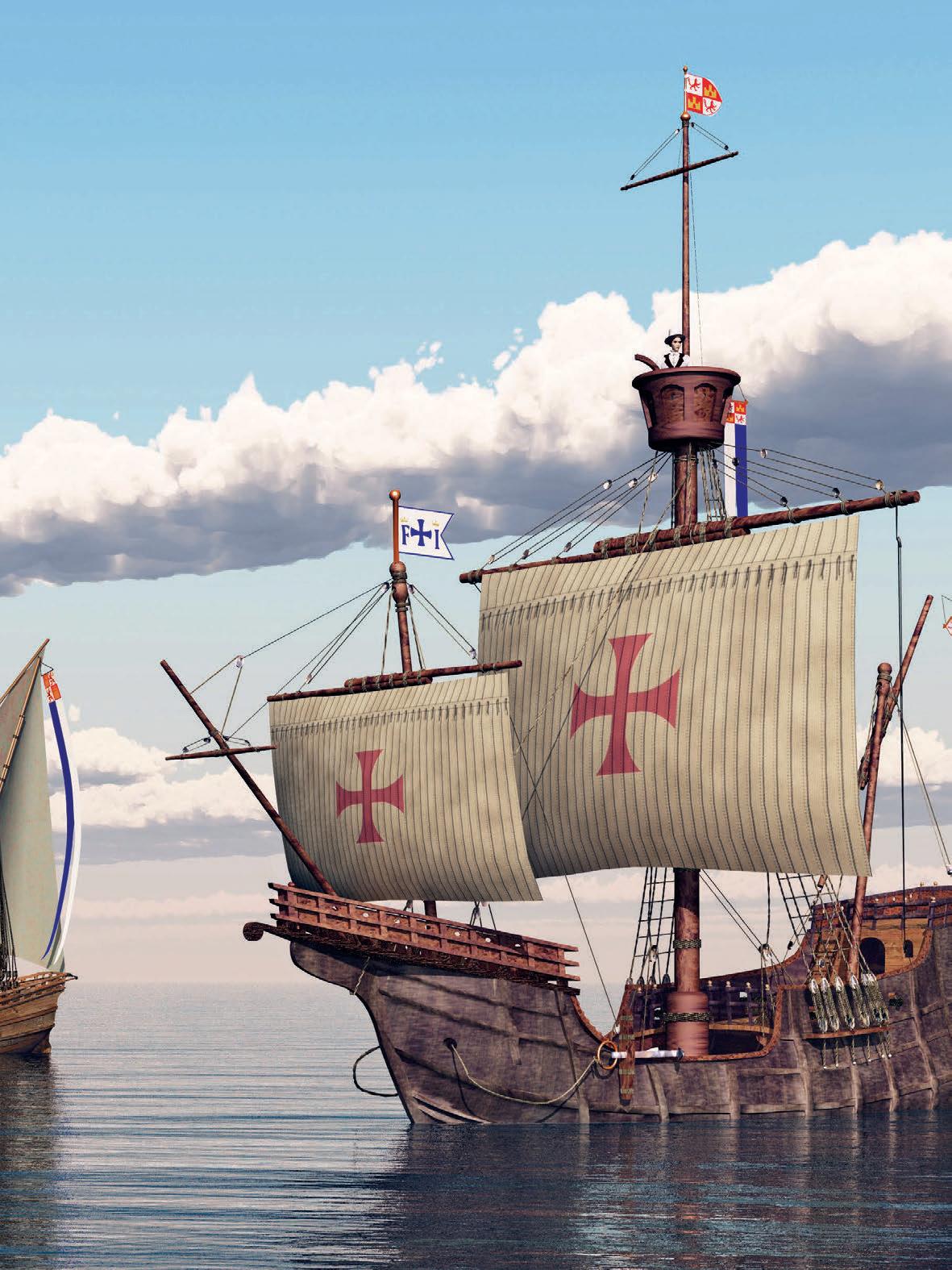
Columbus made four journeys across the Atlantic Ocean between 1492 and 1502. But instead of finding a trade route to India, he landed in the Americas. Thinking it was India, he called the land "the Indies" and the people there "Indians." Sailing from island to island in the Caribbean Sea, he claimed them for the Spanish king and queen.
More than 1,000 years earlier, the Indigenous Taino people had migrated from the northern coast of South America and settled on a number of those Caribbean islands. They lived in small villages, groupe by clans and ruled by a cacique, or male chief. Their society was matrilineal and agricultural. Women made decisions related to families and local Taino village groups. Women also grew crops of pineapples, cassavas, and sweet potatoes, while men hunted and gathered seafood.
Columbus noted in his journal that the Taino "... are the best people in the world, and above all, the gentlest." Assuming they had no religion of their own, Columbus declared that "they would easily be made into Christians." Roman Catholicism was the official religion in Spain, and Spain's rulers hoped to spread their religion to their colonies. Columbus also made a darker observation. With little effort, he thought, "All the inhabitants could be taken away to Spain, or made slaves on the island."
Everywhere Columbus explored, he asked where he might find gold. The Taino people freely gave the bits of gold that they wore to the Spaniards. But it wasn't until Columbus landed on present-day Hispaniola that the Spanish found quantities of the precious metal. That discovery led to the destruction of the Taino people and their way of life throughout the West Indies.
This story is from the March 2023 edition of Cobblestone American History Magazine for Kids.
Start your 7-day Magzter GOLD free trial to access thousands of curated premium stories, and 9,000+ magazines and newspapers.
Already a subscriber ? Sign In
This story is from the March 2023 edition of Cobblestone American History Magazine for Kids.
Start your 7-day Magzter GOLD free trial to access thousands of curated premium stories, and 9,000+ magazines and newspapers.
Already a subscriber? Sign In

Putting the Pieces Together
Americans needed to begin to put the past behind them, come together, and plan for the future in the spring of 1865. But Abraham Lincoln, the man best equipped to lead them and who had hoped to restore the country as smoothly and peacefully as possible, had been assassinated.

LAST SHOTS
The last Confederate forces in the Civil War didn’t surrender in the spring of 1865 or on a battlefield.

AND IN OTHER 1865 NEWS
A group of African Americans stop at the White House’s annual public reception on January 1, where they shake hands with President Abraham Lincoln.

A Plot to Kill President the
For several months, actor John Wilkes Booth’s band of conspirators had plotted to capture President Abraham Lincoln and hold him hostage in exchange for Confederate prisoners.

Let the Thing Be Pressed
In June 1864, Union Lieutenant General Ulysses S. Grant began a nearly 10-month campaign in Virginia.

HEALING THE NATION
President Abraham Lincoln took the oath of office for the second time on March 4, 1865.

A Helping Hand
The spring season is hard in any agricultural society. Plants and animals are too small to eat.

WAR SHERMAN-STYLE
As far as Union Major General William T. Sherman was concerned, the Civil War had gone on long enough.

PEACE TALKS
The fall of Fort Fisher made clear that the Confederacy’s days were numbered. Southerners were tired and hungry.

FORT FISHER'S FALL
Outnumbered Confederate soldiers inside Fort Fisher were unable to withstand the approach of Union troops by land and the constant Union naval bombardment from the sea.